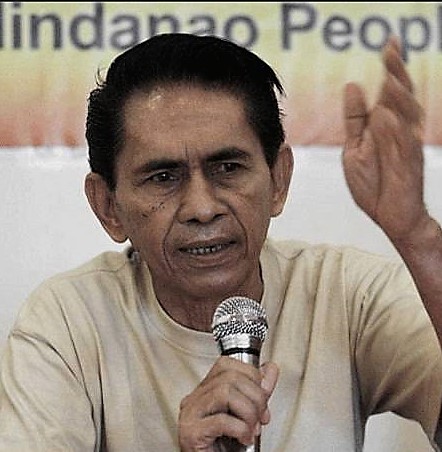The Significance of March 18 to the Muslims in the Philippines
RANAO STAR PHILIPPINES
(Story developing)
 |
| The late Arula, lone witness to the Jabidah Massacre was less cared by the major Moro fronts. |
ILIGAN CITY, March 18: Early this morning, a group of Civil Society Organizations (CSOs) will march from Kilometer Zero in the newly siege Marawi City to the main campus of the Mindanao State University (MSU) to commemorate the so-called infamous Jabidah Massacre.
March 18 actually marks an important date in the present-day generation of the Muslims in the Philippines.
JABIDAH MASSACRE
First, the Jabidah Massacre is believed to have happened at Corregidor Island on March 18, 1968, where some 70 Muslim young cadre officers were mercilessly killed by members of the Armed Forces of the Philippines (AFP) on 18 March 1968.
Author Cesar Adib Majul said that the state, at that point in time, had suppressed the affair in the interest of national unity which therefore led to little or no documentation of the incident. This then led to speculations on the number of trainees killed, varying from 11 to 68 and the reasons behind the massacre.
The infamous incident came to light after the testimony of Bidin Arula was presented in Congress by the opposition of then Philippine strongman Ferdinand E. Marcos. Araula wounded by bullets was able to escape the slaughter and saved by a fisherman at the coast of Cavite, reports said. He claimed that he was the lone survivor of the merciless killing of some 70 young Muslim soldiers in Corregidor Island who were recruited and trained by the Armed Forces supposedly to conquer Sabah. The Philippines had first laid a claim over the North Borneo territory by the late President Diosdado Macapagal.
The alleged massacre triggered the struggle for self-determination and freedom of the Bangsamoro People. It paved the way for the birth of the Moro National Liberation Front (MNLF) organized by the Top 90 cadres who were sent to nearby Malaysia for military training, and later the Moro Islamic Liberation Front (MILF) and other Moro fronts who broke away and groups.
From then on and every March 18 henceforth, Civil Society Organizations (CSOs) working with institutions funded by a third party who are mostly invincible players in the global arena, commemorate the Jabidah Massacre.
But not everybody believes it really did happen. To the disbelievers, the testimony of one in the person of Bidin Arula is not enough to hold water in the absence of convincing evidence. There are a few questions in this regard asked which until now have not been clearly answered:
1. Why was there no single cadaver of the so-called killed recruits recovered and bodily presented?
2. How was a wounded Araula able to swim in the shark-infested waters between Corrigidor and Cavite?
3. Why was there no single immediate relative of any of the victims to come out to the open and complain?
4. Why do the MNLF and MILF care less about Arula?
To the disbelievers of the Jabidah Massacre, it was a massacre that never was. They think it was a part of disinformation propaganda of the powers that be in the time.
THE 1935 DANSALAN DECLARATION
Second, the Dansalan Declaration of 1935 was signed by about 120 Maranao leaders on March 18, 1935 asking the United States government not to include the Morolandia in independence of the Philippine Republic under Manuel L. Quezon to be granted by the United States occupying the archipelago at the time.
The declaration was reportedly prepared at the Torogan of Didato Amai Manabilang and signed by one hundred twenty datus of Lanao, with 30 sultans, with a strongly worded letter, to the U.S. President Franklin D. Roosevelt and the U.S. Congress that, in the U.S. grant of Philippine independence, Mindanao and its Muslim inhabitants should not be included and should remain under American rule to be granted separate independence at the right time.
The Declaration stressed that Luzon and the Visayas are Christian-dominated while Mindanao is predominantly Muslims and therefore the two people with different religion and culture cannot peacefully co-exist with one another.
The Dansalan Declaration was introduced by Congressman Robert Bacon (Democrat, Ohio) as an amendment to the Philippine Independence bill at the U.S Congress but was defeated by the lobby of pro-Philippine Independence leaders led by Quezon.
In said letter, the Maranao datus believed if this would happen it would create chaos and troubles. Instead, they asked that Mindanao remain as a colony of the United States and be given independence after ten years when they were ready to govern themselves. Many Muslim scholars agreed that had the U.S. Congress adopted the Dansalan Declaration the secessionist wars for an independent Mindanao state waged by the Moro National Liberation Front and the Moro Islamic Liberation Front and other extremist groups would have been prevented. The secessionist wars which continued to this day have claimed the lives of more than 100,000 mostly Muslim lives and 10,000 soldiers and policemen.
THE BANGSAMORO FREEDOM DAY
Third, March 18 is also celebrated as Bangsamoro Freedom Day after Nur Misuari and his Central Committee of the Moro National Liberation Front (MNLF) declared that date as Bangsamoro National Day which is recognized by the international community particularly the pan-Arab Organization of Islamic Cooperation (OIC).
Moro fronts and other organizations commemorate the occasion throughout the archipelago every year. - Ranao Star Philippines



